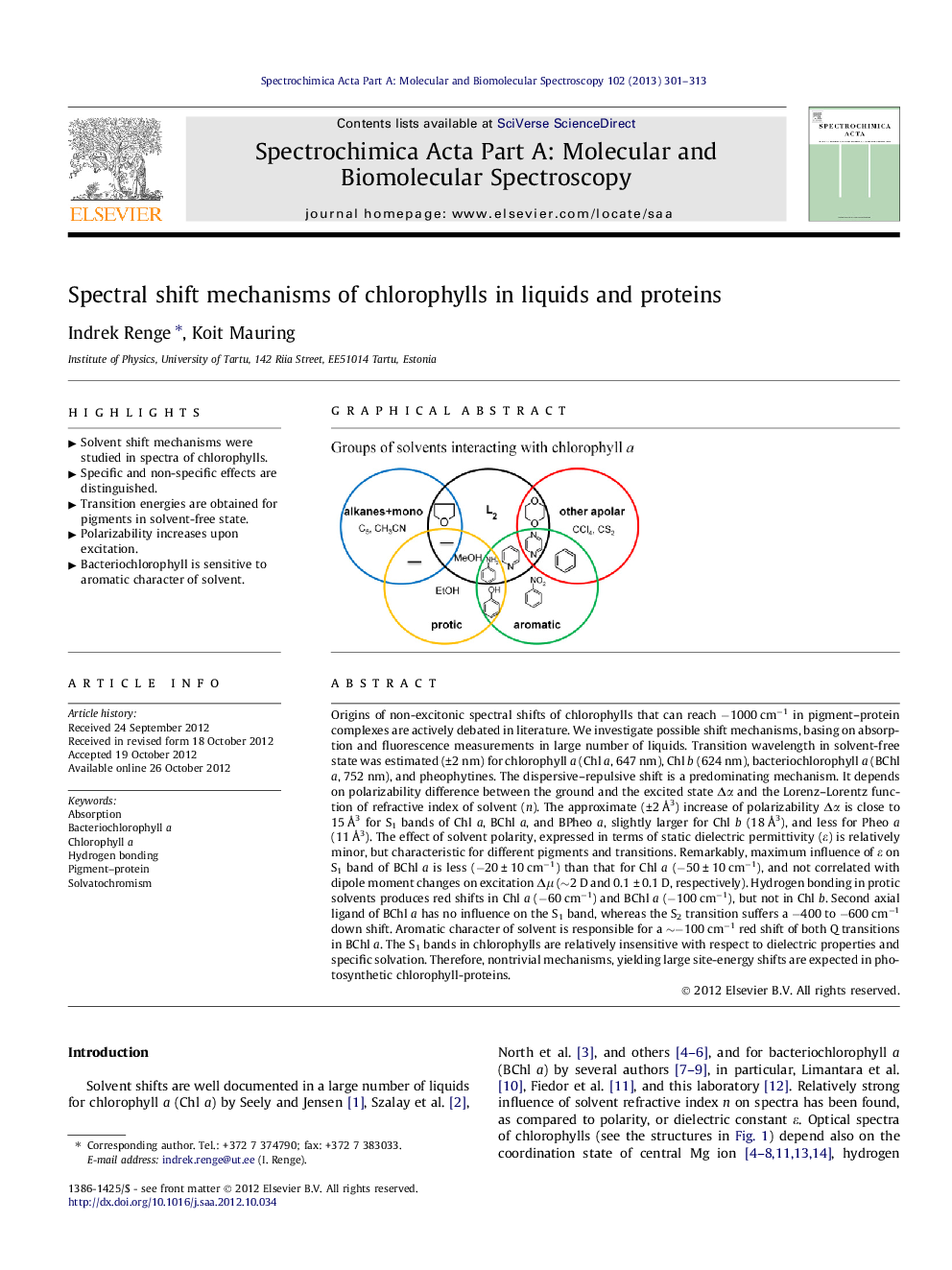| Article ID | Journal | Published Year | Pages | File Type |
|---|---|---|---|---|
| 1231489 | Spectrochimica Acta Part A: Molecular and Biomolecular Spectroscopy | 2013 | 13 Pages |
Origins of non-excitonic spectral shifts of chlorophylls that can reach −1000 cm−1 in pigment–protein complexes are actively debated in literature. We investigate possible shift mechanisms, basing on absorption and fluorescence measurements in large number of liquids. Transition wavelength in solvent-free state was estimated (±2 nm) for chlorophyll a (Chl a, 647 nm), Chl b (624 nm), bacteriochlorophyll a (BChl a, 752 nm), and pheophytines. The dispersive–repulsive shift is a predominating mechanism. It depends on polarizability difference between the ground and the excited state Δα and the Lorenz–Lorentz function of refractive index of solvent (n). The approximate (±2 Å3) increase of polarizability Δα is close to 15 Å3 for S1 bands of Chl a, BChl a, and BPheo a, slightly larger for Chl b (18 Å3), and less for Pheo a (11 Å3). The effect of solvent polarity, expressed in terms of static dielectric permittivity (ε) is relatively minor, but characteristic for different pigments and transitions. Remarkably, maximum influence of ε on S1 band of BChl a is less (−20 ± 10 cm−1) than that for Chl a (−50 ± 10 cm−1), and not correlated with dipole moment changes on excitation Δμ (∼2 D and 0.1 ± 0.1 D, respectively). Hydrogen bonding in protic solvents produces red shifts in Chl a (−60 cm−1) and BChl a (−100 cm−1), but not in Chl b. Second axial ligand of BChl a has no influence on the S1 band, whereas the S2 transition suffers a −400 to −600 cm−1 down shift. Aromatic character of solvent is responsible for a ∼−100 cm−1 red shift of both Q transitions in BChl a. The S1 bands in chlorophylls are relatively insensitive with respect to dielectric properties and specific solvation. Therefore, nontrivial mechanisms, yielding large site-energy shifts are expected in photosynthetic chlorophyll-proteins.
Graphical abstractFigure optionsDownload full-size imageDownload as PowerPoint slideHighlights► Solvent shift mechanisms were studied in spectra of chlorophylls. ► Specific and non-specific effects are distinguished. ► Transition energies are obtained for pigments in solvent-free state. ► Polarizability increases upon excitation. ► Bacteriochlorophyll is sensitive to aromatic character of solvent.
